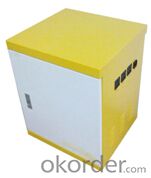Home Solar Power System
- Loading Port:
- China Main Port
- Payment Terms:
- TT OR LC
- Min Order Qty:
- -
- Supply Capability:
- -
OKorder Service Pledge
Quality Product, Order Online Tracking, Timely Delivery
OKorder Financial Service
Credit Rating, Credit Services, Credit Purchasing
You Might Also Like
Specifications
3000w home solar power system/stand alone solar power system
1.10W7AH solar energy kit
1.Attachments:1x3W/12V LED Bulb*2, Phon
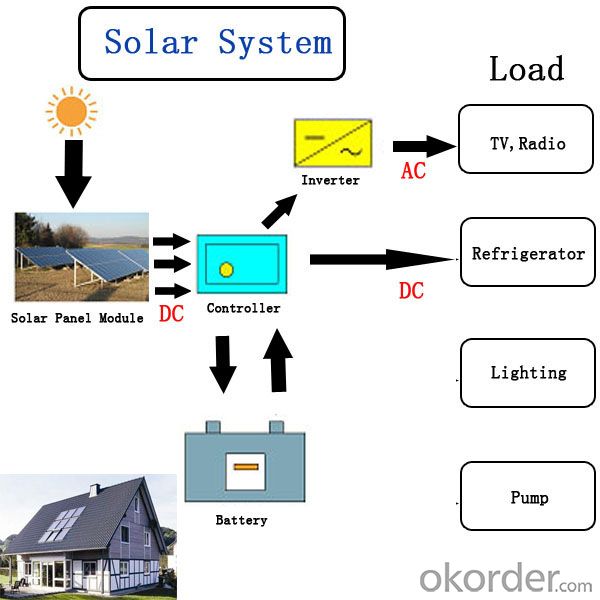
| Solar Panel | |||||||
| Type | T2-160W |
| |||||
| Rated Maximum Power | 160W | ||||||
| Maximum Power Voltage (Vmp) | 36V | ||||||
| Maximum Power Current (Imp) | 4.44 | ||||||
| Open Circuit Voltage(Voc) | 42.48V | ||||||
| Short Circuit Current(Isc) | 4.89 | ||||||
| Power Toerance | ±3% | ||||||
| Maximum System Voltage | 1000V | ||||||
| Operating Temperature | -40℃~+85℃ | ||||||
| Standard Test Conditions | AM1.5 100mW/cm2 25’C | ||||||
| Size | 1580*808*35MM | ||||||
| Weight | 16.5KG | ||||||
| Quantity | 8PCS | ||||||
| Controller | |||||||
| System voltage | 48V | Balance charge voltage | 58.4V±1% | ||||
| System current | 30A | Increase charge voltage | 57.6V±1% |
| |||
| No-load loss | <15mA | Discharge protection voltage | 44.4V±1% | ||||
| Solar energy input voltage | <100V | Discharge protection voltage | 51.2V±1% | ||||
| Over voltage protection | 66V | Work temperature | -25℃to+60℃ | ||||
| Over voltage recovery | 60V | temperature | -4.0mv/℃/2V | ||||
| Over-load, short circuit protection | 1.25 times rating current 30S;1.5 times rating current 10S overload current protection;≥3 times rating current short circuit protection | ||||||
| Inverter | |||||||
| Rated power | 3000W | ||||||
| AC input | Voltage | 140V-275VAC | |||||
| Input Frequency | 40~60Hz | ||||||
| Charge current | ≤10A | ||||||
| DC voltage range allowed | 48V | ||||||
| AC output | Voltage | 110V/220/230/240VAC±5% | |||||
| Frequency | 50/60HZ±0.5 | ||||||
| Wave from | Sine-wave | ||||||
| Inverter efficiency | 80-90% | ||||||
| Work environment | Working temperature | -25℃~+50℃ | |||||
| Relative humidity | <90%,no condensing | ||||||
| Altitude | <1 500m | ||||||
| noise | ≤40dB | ||||||
| Protection | Battery under-voltage protection, battery over-voltage protection, output overload protection, over-current protection, Overload 150%, 10 seconds | ||||||
| power box | 600*490*470 | ||||||
| Weight | 47kg | ||||||
| Battery |  | ||||||
| Nominal capacity | 120AH | ||||||
| Dimensions | 409*174*240mm | ||||||
| Weight Approx | 34kg | ||||||
| Quantity | 8pcs | ||||||
| Accessories |    | ||||||
| PV module mounting system | 3000*150*150*1set Weight:36KG | ||||||
| cables | 80M Weight:6.4KG | ||||||
| battery box | size:750*580*180 15KG | ||||||
| User manual | 1pcs | ||||||
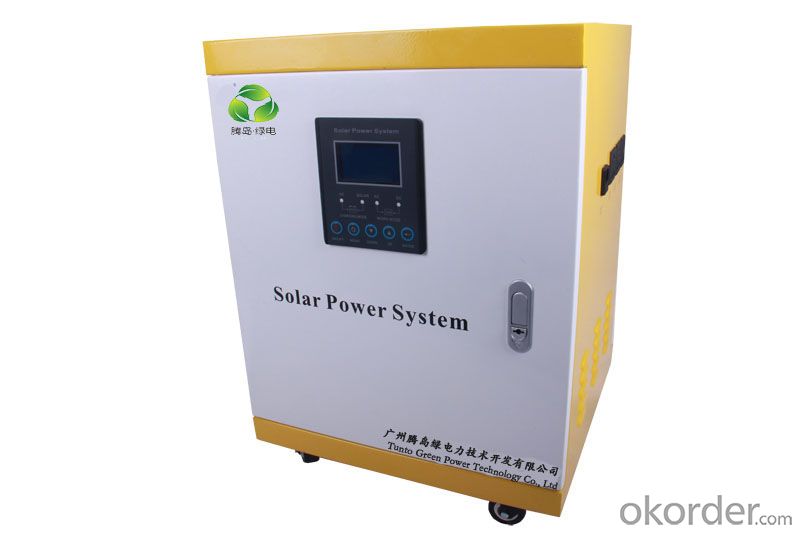
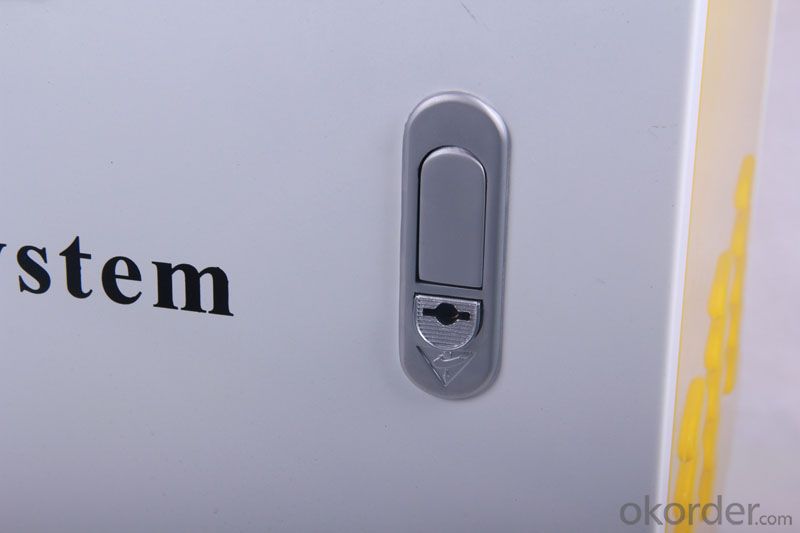
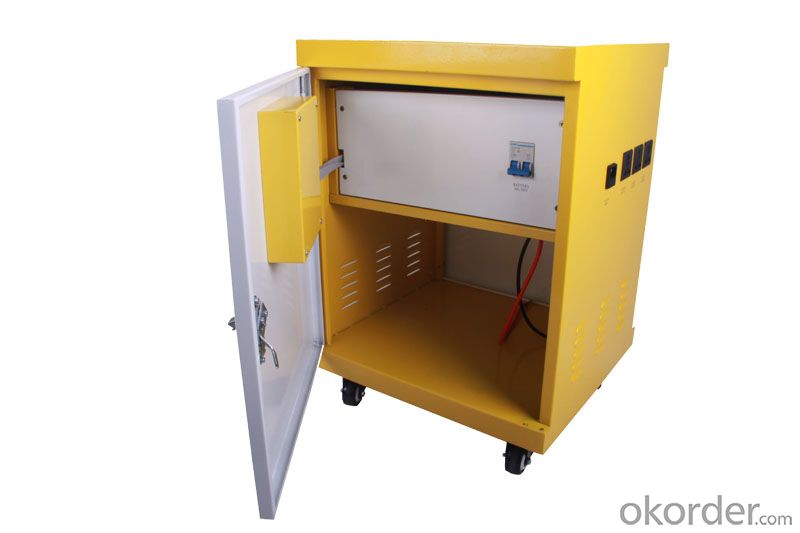
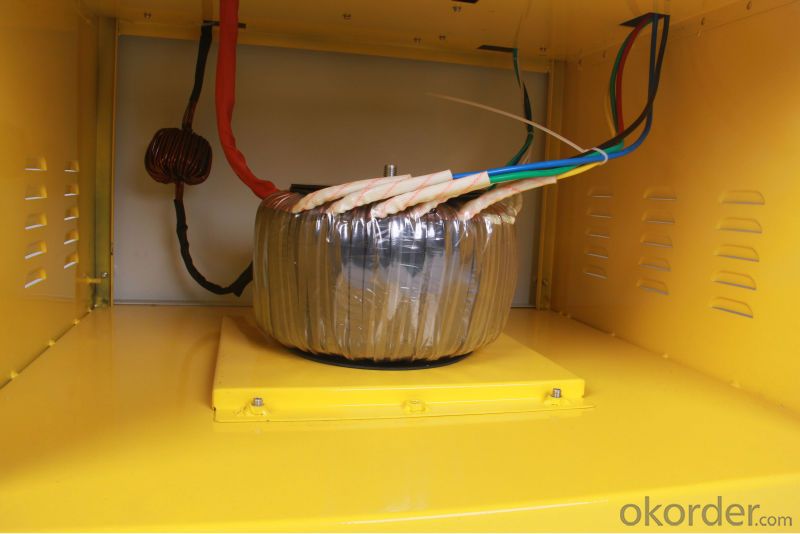


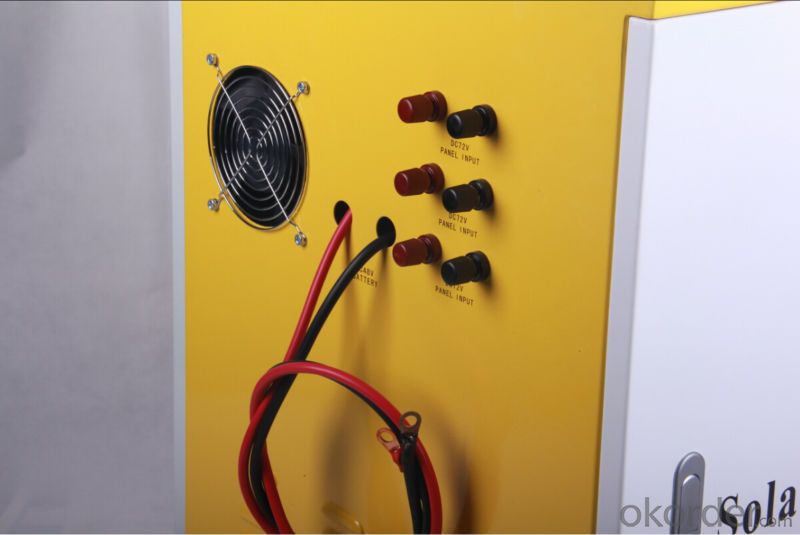
- Q:Can solar energy systems be installed on religious institutions?
- Yes, solar energy systems can be installed on religious institutions. Many religious institutions have recognized the importance of embracing sustainable practices and reducing their carbon footprint. Installing solar panels on their rooftops or grounds allows them to generate clean and renewable energy, which aligns with their values of stewardship and care for the environment. Additionally, solar energy systems can also help religious institutions save money on their electricity bills, freeing up resources to support their missions and community initiatives.
- Q:What is the role of maximum power point tracking (MPPT) in a solar energy system?
- The role of maximum power point tracking (MPPT) in a solar energy system is to maximize the efficiency and output of the system by continuously adjusting the operating point of the solar panels to ensure they are operating at their maximum power point. This is important because the power output of solar panels is highly dependent on environmental factors such as temperature and sunlight intensity. MPPT algorithms track these variations and optimize the power output by adjusting the voltage and current to match the maximum power point. By doing so, MPPT increases the overall energy generation and improves the performance of the solar energy system.
- Q:Solar power generation system installation which precautions, ah, there is a need for special attention
- 7, the battery terminal to be strong (10 million can not be short circuit) to pay attention to the polarity of installation, to avoid the explosion and fire. 8, the controller has the corresponding distribution protection measures. But the wiring process should also pay attention to prevent polarity reverse, short circuit, etc.. Avoid unnecessary trouble. Pay attention to the angle of placing and avoid the rain. 9, with inverter system, inverter connected to be connected to the battery positive and negative poles. 10, the construction site must be open, in the installation of solar cells can not be tall buildings or other things blocking the sun. 11, the controller needs to choose low loss, good stability, long life controller. When the installation is clear that the controller is a common negative or common cathode design, so that the entire system connection, installation help.
- Q:Can solar energy systems be used for powering electric battery manufacturing plants?
- Electric battery manufacturing plants can use solar energy systems to power their operations. Solar energy is a renewable and clean source that can be converted into electricity through photovoltaic (PV) panels. These panels capture sunlight and convert it into usable electricity. This electricity can then be utilized in various industrial processes, including electric battery manufacturing. To implement solar energy systems, manufacturing plants can install PV panels on their rooftops or in nearby open spaces. This allows them to directly power their operations, reducing their dependence on fossil fuel-based power and lowering greenhouse gas emissions. Additionally, any excess electricity generated can be stored in batteries for later use, ensuring a steady power supply even during periods of low sunlight. By embracing solar energy systems, electric battery manufacturing plants can make significant strides in reducing their carbon footprint and contributing to a more sustainable energy future. This not only supports global efforts against climate change but also helps in cutting down operational costs associated with traditional power sources.
- Q:Do solar energy systems require a lot of maintenance?
- No, solar energy systems generally require very little maintenance.
- Q:Can solar energy systems reduce electricity bills?
- Yes, solar energy systems can reduce electricity bills. By harnessing the power of the sun to generate electricity, homeowners and businesses can significantly reduce their reliance on the grid, resulting in lower electricity bills. Additionally, excess energy produced by solar panels can be sold back to the grid, further offsetting costs. Overall, investing in solar energy systems can lead to substantial savings on electricity bills in the long run.
- Q:How does shading affect the performance of solar energy systems?
- Shading can significantly impact the performance of solar energy systems by reducing the amount of sunlight that reaches the solar panels. This decreases the overall energy production and efficiency of the system. Even partial shading on a small portion of the panels can lead to significant power losses, as solar panels are interconnected and work as a whole. Therefore, it is crucial to design solar installations in areas with minimal shading to maximize their performance and optimize energy generation.
- Q:How do solar energy systems impact greenhouse gas emissions?
- Solar energy systems have a significant positive impact on greenhouse gas emissions as they generate electricity without producing any greenhouse gases during operation. By replacing traditional fossil fuel-based power sources, solar energy reduces the overall amount of greenhouse gases released into the atmosphere, thus helping mitigate climate change.
- Q:Can solar energy systems be used for powering space exploration missions?
- Yes, solar energy systems can be used for powering space exploration missions. Solar energy is a clean and renewable source of power that is abundant in space. It is already being utilized for various space missions, such as the International Space Station (ISS), Mars rovers, and satellites. Solar panels, also known as photovoltaic (PV) cells, convert sunlight into electricity. They are lightweight, compact, and can be easily integrated into the design of spacecraft. Solar panels are especially useful for missions that are close to the Sun or in space where there is ample sunlight, as they can provide a steady and reliable source of power. The ISS, for example, relies heavily on solar power. It is equipped with large solar arrays that capture sunlight and generate electricity to meet the energy demands of the crew and the various systems onboard. The Mars rovers, such as Curiosity and Perseverance, also utilize solar panels to power their operations on the red planet. Solar energy systems offer several advantages for space exploration missions. Firstly, they eliminate the need for bulky and limited fuel sources, such as batteries or radioactive materials, reducing the overall weight and cost of the mission. Secondly, solar energy systems are virtually maintenance-free, providing a long-lasting and reliable source of power. Additionally, solar power is environmentally friendly, producing no emissions or pollution during operation. However, there are some limitations to using solar energy in space exploration. For missions that venture far from the Sun or operate in areas with limited sunlight, alternative power sources like nuclear energy or fuel cells may be necessary. Moreover, solar panels are susceptible to damage from micrometeoroids, radiation, and other space debris, requiring protective measures and redundancy systems. In conclusion, solar energy systems have proven to be a viable and efficient option for powering space exploration missions. Their ability to convert sunlight into electricity, combined with their lightweight and compact design, make them an ideal choice for providing a sustainable and reliable source of power in space.
- Q:Can a solar energy system be installed on a boat or RV?
- Indeed, it is possible to install a solar energy system on a boat or RV. Nowadays, it is becoming increasingly popular for boat and RV owners to incorporate solar panels to supply power to their electrical systems. These panels can be affixed to the roof or deck of the boat or RV, or they can be portable and assembled as required. By capturing sunlight and transforming it into electricity, these panels enable the charging of batteries, operation of appliances, and usage of various electrical devices. The installation of a solar energy system on a boat or RV presents several advantages. Firstly, it diminishes reliance on conventional fuel sources, offering a sustainable and renewable energy alternative. Secondly, it grants individuals greater freedom and flexibility in remote areas where access to electricity may be limited. Moreover, solar panels are lightweight, robust, and require minimal maintenance, making them highly suitable for the mobile nature of boats and RVs.
1. Manufacturer Overview |
|
|---|---|
| Location | |
| Year Established | |
| Annual Output Value | |
| Main Markets | |
| Company Certifications | |
2. Manufacturer Certificates |
|
|---|---|
| a) Certification Name | |
| Range | |
| Reference | |
| Validity Period | |
3. Manufacturer Capability |
|
|---|---|
| a)Trade Capacity | |
| Nearest Port | |
| Export Percentage | |
| No.of Employees in Trade Department | |
| Language Spoken: | |
| b)Factory Information | |
| Factory Size: | |
| No. of Production Lines | |
| Contract Manufacturing | |
| Product Price Range | |
Send your message to us
Home Solar Power System
- Loading Port:
- China Main Port
- Payment Terms:
- TT OR LC
- Min Order Qty:
- -
- Supply Capability:
- -
OKorder Service Pledge
Quality Product, Order Online Tracking, Timely Delivery
OKorder Financial Service
Credit Rating, Credit Services, Credit Purchasing
Similar products
New products
Hot products
Hot Searches
Related keywords













